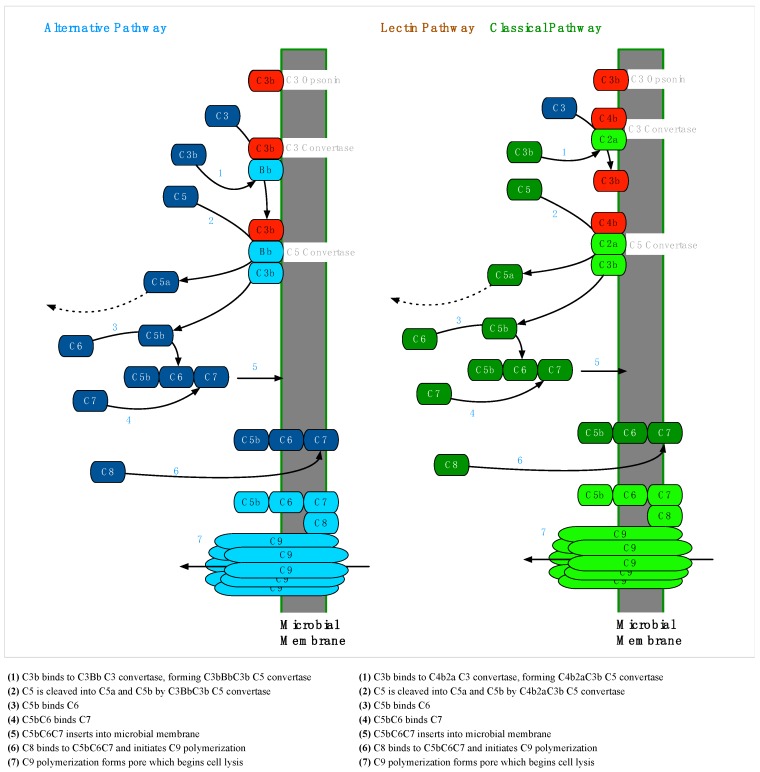Figure 7.
Membrane Attack Complex Formation via the Alternative, Lectin and Classical Complement Pathways—The formation of membrane attack complexes (MACs) is initiated when a membrane-bound C5 convertase cleaves soluble C5 into C5a and C5b. C6 and C7 bind C5b and the resulting C5bC6C7 complex, which is hydrophobic at the C7 end, embeds in the membrane. The MAC polymerizes when C8 binds C7, which induces the addition of several C9 molecules, forming a pore with a hydrophilic center that begins to lyse the cell. C5 convertases of the alternative pathway are formed by an additional C3b molecule joining a membrane-bound C3bBb C3 convertase, forming C3bBbC3b. In the lectin and classical pathways, the C3 convertase C4b2a is joined by C3b to form C4b2aC3b, which serves as the C5 convertase [37].

